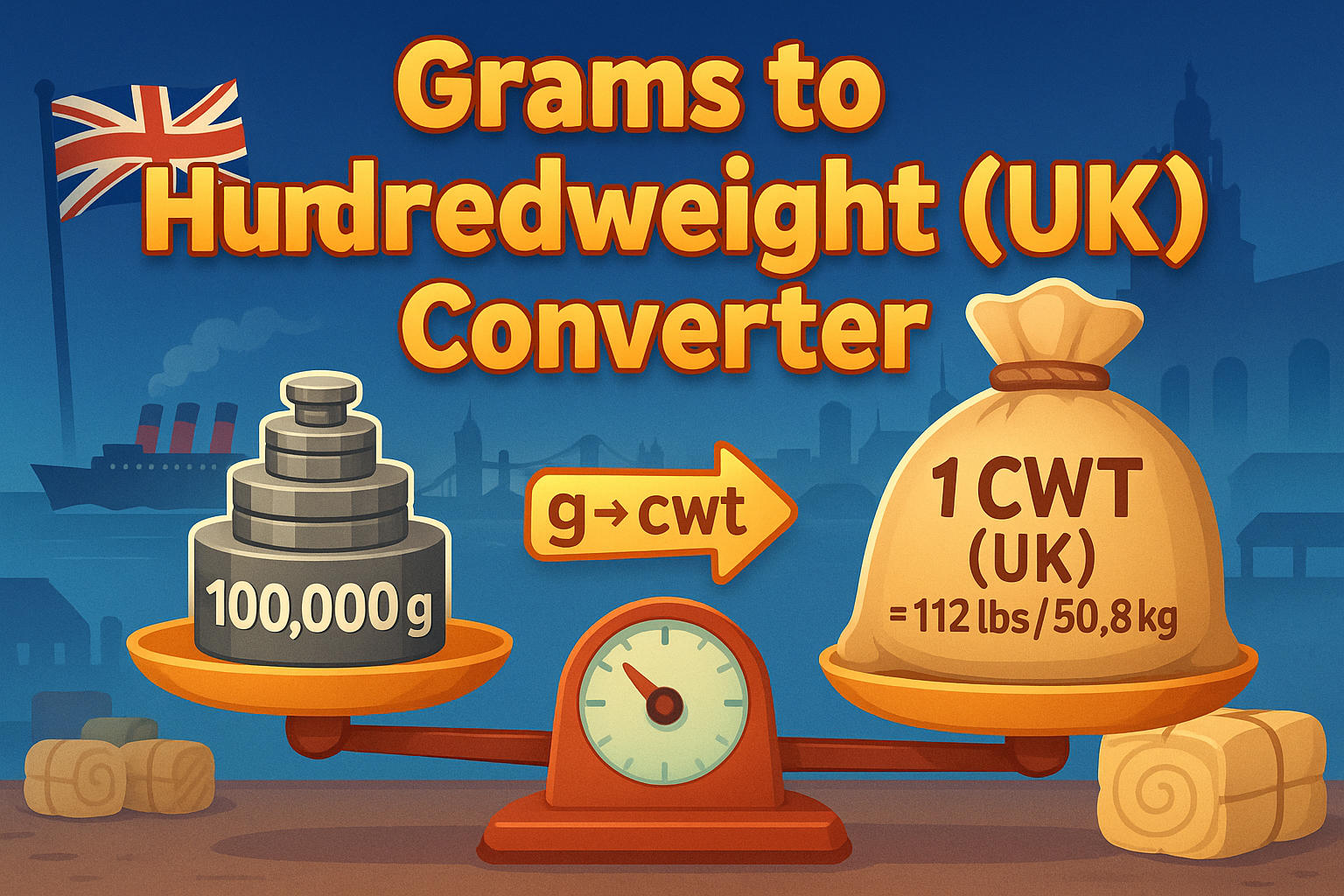grams to hundredweight (UK) – How to convert g to cwt UK
Whether you're working with trade data, historical records, or British farming reports, converting grams to hundredweight (UK) can be more relevant than you think. In this guide, you’ll learn exactly how to convert g to cwt UK, why the Imperial system matters, and how it differs from the U.S. version.
Grams and Hundredweight (UK)
-
A gram (g) is the base unit of mass in the metric system, equal to one-thousandth of a kilogram and widely used in science, nutrition, and everyday measurements across the globe.
-
In contrast, the hundredweight (UK)—abbreviated as cwt (UK)—is part of the Imperial system and equals 112 pounds (around 50.802345 kilograms). Historically used in British agriculture, shipping, and wool trade, the hundredweight remains relevant in certain UK and Commonwealth contexts.

How to Convert Grams to Hundredweight (UK)?
Here’s the simple formula:
cwt UK = grams ÷ 50,802.345
Example:
If you have 100,000 grams:
100,000 ÷ 50,802.345 ≈ 1.968 cwt UK
For an instant and accurate result, use our Grams to Hundredweight (UK) Converter — no manual math required. And if you're working with pounds first, try the Pounds to Hundredweight (Imperial) Converter for easy steps between systems.
Did you know?
-
In scientific research, grams are often used as the foundation for scaling up or down to milligrams and kilograms, which is why precision tools like the Grams to Milligrams Converter exist for lab-level detail.
-
In the UK wool trade, pricing used to be calculated per hundredweight. Even today, auctions and export reports may use cwt as a unit of mass when referring to bales of wool or livestock feed.
-
British food packaging, like chocolate bars or cereal boxes, must declare weight in grams per UK labeling laws, making it a staple in everyday shopping.
-
In UK farming, produce like potatoes or sugar beet is often recorded in hundredweight, especially in historical or bulk pricing documents.
When the British Empire Standardized Trade
In the 19th century, Britain led a global trade network powered by Imperial measurements. The hundredweight (UK) became central in measuring commodities like coal, flour, and metals. Ships departing from Liverpool or London recorded cargo in tons, hundredweight, and stone.
In the book Victorian London: The Life of a City 1840–1870, shipping invoices from 1853 show goods like wool and barley priced in cwt — reflecting the standard of the day. The unit continued its legacy into British colonial economies and even appeared in Commonwealth nations like Canada and Australia before metrication took over.
Today, while less common in public use, the cwt (UK) still appears in government reports, heritage trades, and specialized agriculture — a relic of Empire, still alive in numbers.
.jpg)
Conclusion
Now that you know how to convert grams to hundredweight (UK), you’re ready to bridge two powerful systems of measurement. Whether you're analyzing trade documents, working in a UK-based supply chain, or studying historical data, this conversion connects the metric and Imperial worlds.
Use our Grams to Hundredweight (UK) Converter for instant results, or explore more tools like the Weight Converter and Unit Converter Tool. For every unit in every context, Jetcalculator’s converter tool has you covered.

